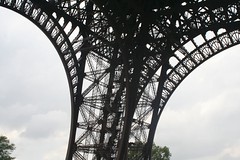
Our first stop was the Eiffel Tower. It was built in 1889 as the entrance to the World Expo celebrating the centennial of the French Revolution. When it was built it was the tallest structure in the world and remained so until the Chrysler Building was completed in 1930. The tower was built as a temporary structure and many in Paris were upset when it wasn’t disassembled. It was almost universally hated by Parisians. It later proved to be valuable as a radio tower and was allowed to stand.
[Eiffel sketch ]
We all sat on the Champ de Mars and quickly sketched the tower. The Champ is named after the Roman god of war because it was used for military exercises conducted at the Ecole Militaire at the far end. This is also the site of a massacre. In 1791 the military opened fire on a crowd who had gathered with a petition to remove Loius XVI from power. Fifty people died.
In June a new museum opened nearby. The Musée du quai Branly was designed by Jean Nouvel to house a collection of tribal and indigenous art. It features a wall covered in plants. As much as I love art, history and culture, I get excited by contemporary architecture! This building is incredibly cool.
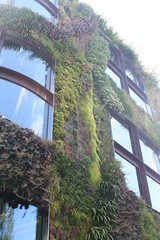
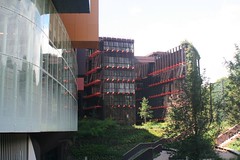
In Paris you don’t walk along the Seine, you stroll. The walkways and streets are wide and comfortable, thanks to Baron Haussmann. In 1853 under the direction of Napolean III, Haussmann began a massive rebuilding of the city. At that time Paris was a still a medieval city plagued by crime, disease and decay caused by decades of revolution. The narrow winding streets had proved the perfect defense for revolutionaries as barricades were built in battles with authorities. Haussmann’s plans demolished large sections of the city, replacing them with wide, safe and indefensible streets. He created the long, dramatic avenues that connect major sites. The look we associate today with Paris was created by him. But “Haussmannisation” wasn’t without criticism. It destroyed the historic Paris and displaced all but the bourgeois.
The Champs-Élysées is French for the Elysian Fields, the place in Greek mythology where the righteous dead went to rest. The tree-lined avenue runs from the Place de le Concorde to the Arc de Triomphe. We crossed the Seine on the Pont Alexandre III, passing the Grand Palais on the way to the Champs-Élysées.
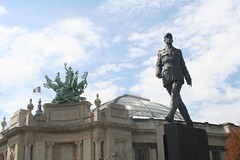
You never know what you’ll find on the streets.
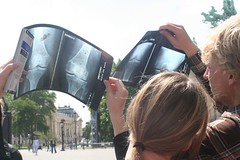
This was our first view of the Arc de Triomphe. The Arc was commissioned by Napoleon Bonaparte to celebrate his victories, but not completed until the 1830s.
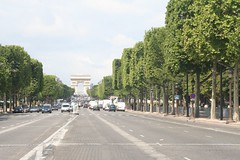
I took this picture while crossing the street, but everyone else was willing to risk their lives for the perfect shot.
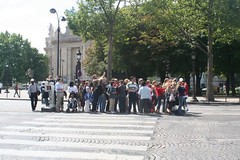
Today the Place de le Concorde is a busy square full of tourists, but it has a sordid and gruesome history. The Place was first designed in 1755 to hold an equestrian statue of King Louis XV. The statue was torn down during the French Revolution and a guillotine was erected. In this spot Louis XVI, Marie Antionette, Robspierre and thousands of others were executed during the Great Terror. The obelisk that is now the center of the Place once stood at the Temple of Luxor in Egypt and was presented to King Louis-Philippe in 1833.
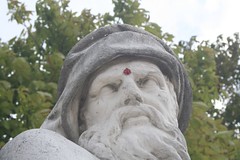
To the west is the Tuileries Garden. The garden was part of the Tuileries Palace originally built by Catherine de' Medici. When Louis XIV completed Versailles the Palace in Paris was left vacant and the gardens became a resort for Parisians. After the revolution the Tuileries became the primary home of Napolean and Josephine. The Palace was finally destroyed by arson in 1871 as a political protest. It once made up the fourth side of the Louvre and there is some talk of rebuilding it to allow the museum to expand. The formal gardens today still reflect the original plans from 1664 and are a beautiful spot to sit and watch the crowds.
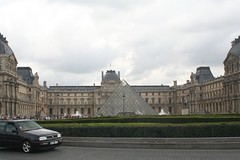
At the far end of the gardens stands the largest museum in the world, the Louvre. The building began it’s life as a palace for Philip Augustus in 1160. The oldest part of the existing building dates back to the 1500s and sections were built over the centuries by different monarchs. For many years artists were allowed to occupy parts of the palace and it began it’s life as museum began during the French Revolution. The Pyramid was designed in 1989 by I.M. Pei when the museum was renovated.
Northwest of the Louvre is Les Halles, considered by my guidebook as the “heart of contemporary Paris”. It was once the location of a vast covered market and today it is a bustling shopping district. We spent the rest of the afternoon here, exploring the streets.
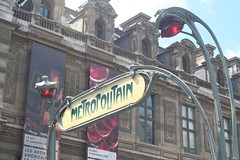
Art nouveau accents are everywhere, from the Metro stations to building details.
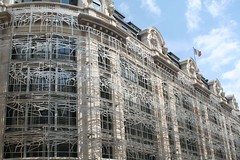
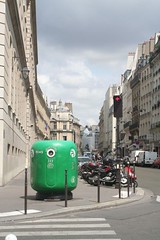
This is a recycling bin. Not much chance of missing it, is there?
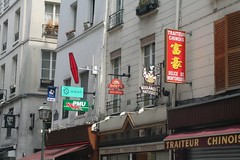
Each Arrondisment has a distinct feel, and Les Halles, bordered on the north by Montmartre, is full of life. This is the bohemian, artistic area, full of musicians and street performers. As we ate at a little café a pair of flautists serenaded us with a piece from Mozart’s “The Magic Flute.” I sat and sketched, and for once I didn’t call attention to myself. This is the area to find great deals in the little shops that line the streets. Audrey, Brighton, Marty and I had fun exploring. On the way back we came across St. Eustache and I had another chance to sketch.
[sketch]
These lamposts illustrate the different personality each district of Paris has.
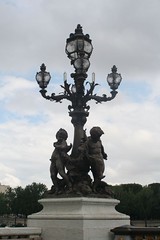
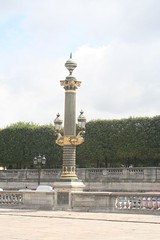
I can't take this one seriously. It looks like a giant cactus.
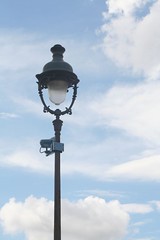
We walked all the way back to the Eiffel Tower and at a crepe stand nearby Brighton introduced us to a French delicacy, banana nutella crepes.





No comments:
Post a Comment